Mastering Chinese Ideograms: Essential Tips for 2025
A Chinese ideogram, also known as a logogram, is a written symbol that represents a concept or meaning rather than a specific sound or phonetic value. Unlike alphabetic systems where letters combine to form words, Chinese ideograms are individual characters that convey meaning directly.
Each character can represent a word, a part of a word, or an idea, making Chinese a logographic writing system. This unique system allows for the expression of complex ideas through visual symbols, reflecting the rich cultural and historical heritage of China.
Whether you’re a language learner, a cultural enthusiast, or simply curious about Chinese writing system, Wukong Education will guide you through the essentials, from the origins of these characters to practical tips for mastering them.
How old are Chinese Ideograms?
Early forms of Chinese Ideograms: Oracle bone Script and Inscriptions on Bronze wares.
The oldest characters can be traced back to the Shang Dynasty in the 14th century BC, when the initial form of writing , oracle bone script, was formed. It was mainly used for divination and was carved on tortoise shells and animal bones. Concurrent with oracle bone inscriptions were bronze inscriptions, also known as bronze inscriptions, which were commonly found on bronze wares of the Western Zhou period. The characters on these inscriptions were of high casting quality and had a regular structure.
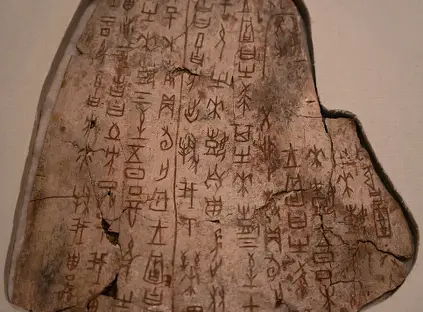
From Seal Script to Regular Script: The Standardization and Evolution of Characters
Over centuries, these early forms evolved into more simplified Chinese characters, such as seal script, which was widely adopted during the Qin Dynasty to unify the writing system across China. As Chinese society developed, so did its writing. Clerical script emerged, making characters easier to write and read, and eventually gave rise to regular script—the style most commonly used today. Regular script, with its clear structure and balanced strokes, became the handwritten and printed standard for modern Chinese characters.
The evolution and standardization of traditional Chinese characters have not only shaped the Chinese language but have also influenced other languages in East Asia. Japanese, Korean, and Vietnamese have all incorporated Chinese words at various points in their histories, demonstrating the far-reaching impact of this ancient script. The Japanese language uses hanzi (known in Japan as kanji ) in combination with two phonetic alphabets.
Today, the legacy of early Chinese character and its descendants continues to thrive, connecting modern readers with thousands of years of linguistic and cultural heritage.
How are Chinese ideograms formed?
For anyone learning Chinese, understanding the structure and components of Chinese characters is essential for mastering reading and writing. Each character is like a puzzle, made up of different pieces that fit together in specific ways. It is precisely because of this that Chinese calligraphy has always been renowned worldwide. Let’s break down the character components and main structures .
Structural Composition of Chinese Writing System
Above-Below Structure (上下结构)
Characters are stacked vertically. For example: 尖 (jiān, sharp) combines 小 (xiǎo, small) on top and 大 (dà, big) below. 笑 (xiào, laugh) has 竹 (zhú, bamboo) on top and 夭 (jīn, cloth) below.
Left-Right Structure (左右结构)
Characters are divided into left and right parts. For example: 把 (bǎ, to hold) has 手 (shǒu, hand) on the left and 巴 (bā) on the right. 保 (bǎo, to protect) has 人 (rén, person) on the left and 甲 (jiǎ) on the right.
Surrounded Structures (包围结构)
One part of the character surrounds another. For example: 问 (wèn, to ask) has 口 (kǒu, mouth) surrounding 问. 国 (guó, country) has 口 surrounding 玉 (yù, jade).
Chinese Strokes and Radicals: Character Components
Radicals (部首 bùshǒu) are fundamental components that classify characters and provide semantic clues. For example, the “water” radical 氵appears in characters like 河 (hé, “river”) and 海 (hǎi, “sea”). Stroke order is also crucial for proper character formation. Characters are typically written from top to bottom and left to right, with specific sequences for each stroke. Over millennia, characters have evolved from ancient pictographs to modern forms. Simplified characters were introduced in the mid-20th century to promote literacy, reducing the complexity of traditional characters.
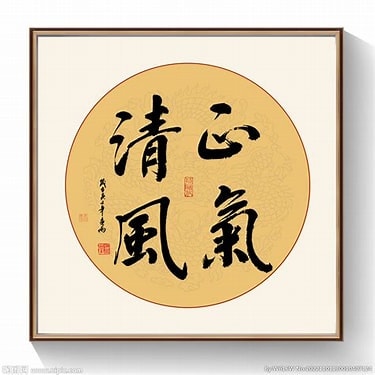
How many types of Chinese Ideograms are there?
Chinese ideograms are like little puzzles, each with its own story and structure. Understanding the different types can make learning them much more fun and intuitive. Let’s dive into the six main categories of Chinese characters and see how they fit together to form this rich and fascinating writing system.
Pictogram: The Roots of Chinese Writing
Pictograms(pictographic characters) are the simplest and oldest form of Chinese characters, directly derived from drawings of objects. For example: 山 (shān) for “mountain” resembles three peaks. 日 (rì) for “sun” depicts a circle with a dot in the center. 木 (mù) for “tree” shows a tree with branches.These characters visually connect to the objects they represent, making them intuitive to understand.
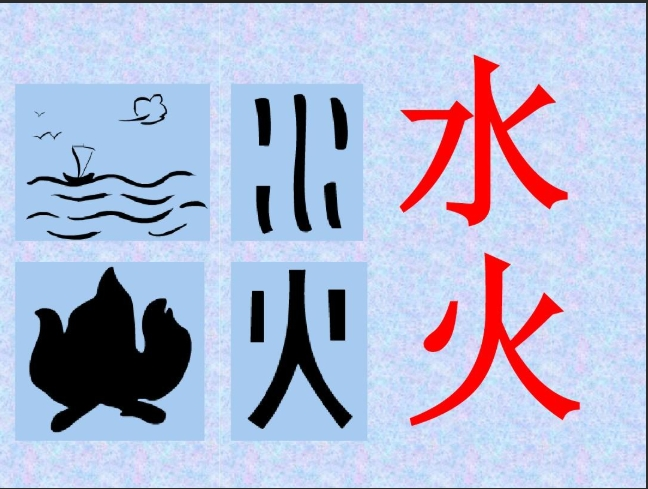
Self explanatory character: Abstract meanings Made Visual
Self explanatory characters represent abstract concepts using basic symbols. Examples include:一 (yī) for “one” is a single horizontal stroke. 上 (shàng) for “above” shows a line above another line. 本 (běn) for “root” adds a small stroke to the character for “tree” (木).These characters use simple visual indicators to convey abstract ideas.
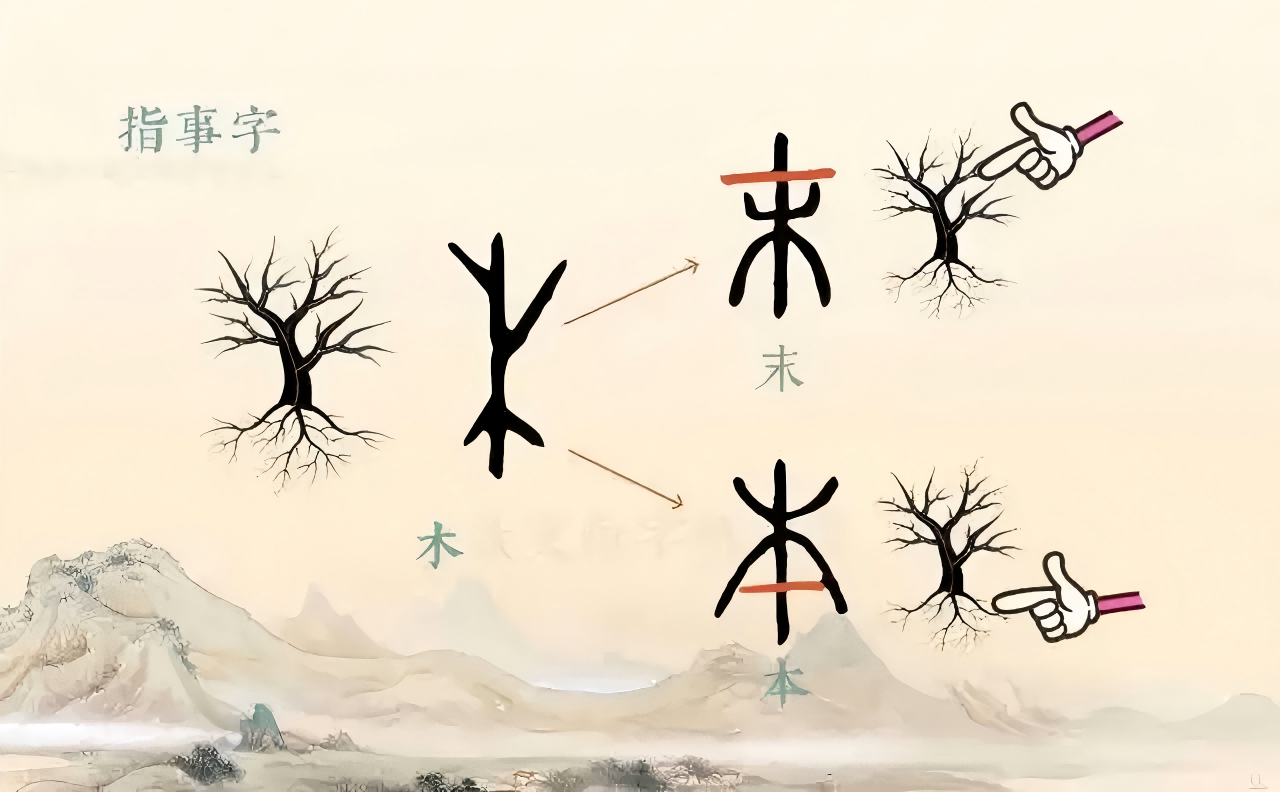
Compound Ideograph: Combining Meanings
Compound ideographs combine two or more pictographs or ideographs to create new meanings. For example: 明 (míng) for “bright” combines 日 (sun) and 月 (moon). 好 (hǎo) for “good” combines 女 (woman) and 子 (child).This type showcases the creativity in combining simple elements to express complex ideas.
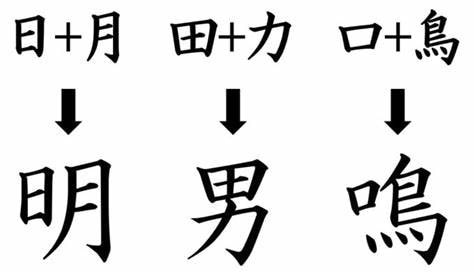
Phono-semantic Compound: The Most Common Type
Phono-semantic compounds are the most common type, making up about 80-90% of all Chinese characters. They combine a semantic component (radical) and one phonetic component. For example: 妈 (mā) for “mother” includes 女 (woman) as the radical and 马 (horse) as the phonetic compound. 河 (hé) for “river” includes 氵(water) as the radical and 可 as the phonetic component.The radical hints at the meaning, while the same phonetic component suggests the character’s pronunciation.
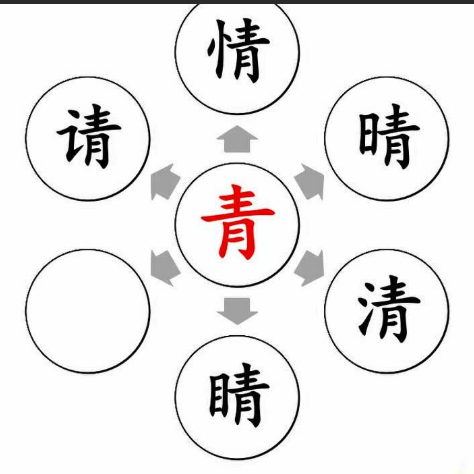
Rebus or Phonetic Loan Character: Borrowing Sounds
Rebus or phonetic loan characters, known as 假借字 (jiǎjièzì) in Chinese, are used to represent words that have the same or similar pronunciation but different meanings. Essentially, they are borrowed to express new meanings without creating new characters.For example,The character “来” was borrowed to represent the action of coming due to its similar pronunciation, whose original Meaning is A type of plant and borrowed Meaning is “To come” or “to arrive.
Transfer Character: Clarifying Meanings
Transfer characters, known as 转注字 (zhuǎnzhùzì) in Chinese, are a unique category within the “Six Books” (六书) of Chinese character classification. These characters are defined by their ability to explain or clarify the meanings of other characters, often sharing similar radicals, sounds, or meanings. They can be thought of as a group of characters that are semantically or phonetically related and can be used interchangeably in certain contexts. For example, one character 本 (běn, root) can be used to explain the meaning of another character related to “foundation” or “origin.”
Learning Strategies for Chinese language students
Diving into the world of Chinese ideograms can be both exciting and challenging. Whether you’re a beginner or looking to enhance your skills, effective learning strategies can make all the difference. Here are some tips to help you master these fascinating characters in a fun and efficient way.
Avoiding Isolation Memorization
Mastering Chinese characters isn’t just about repetition—it’s about understanding their structure and relationships. Delve into character types and radicals for a deeper grasp, and use visual associations to link characters with familiar images.
Focus on the most common Chinese characters first and learn unfamiliar character gradually, as mastering common characters will help you understand everyday texts. But avoid memorizing characters in isolation and learning them in context, like within phrases or expressions, reveals their full meaning and cultural significance. Integrate storytelling and situational examples into your learning, and practice using Chinese characters in daily conversations and writing. Spaced repetition is also key—review characters at increasing intervals to solidify your memory.
Mastering Basic Strokes Order
Learning proper stroke order is crucial for writing Chinese ideograms accurately and efficiently. Proper stroke order ensures characters are written legibly, especially when considering the importance of Chinese strokes. Specialized apps and tools can aid in mastering the correct stroke order, ensuring that you write characters accurately and efficiently while practicing basic strokes.
Implementing a Review System
When it comes to mastering Chinese ideograms,consistency is key. A well-structured review system can significantly boost your memory retention. Flashcards are a tried-and-true method for this—they’re not just popular but super effective. Whether you’re using the old-school paper kind or digital apps, flashcards help reinforce what you’ve learned and keep those characters fresh in your mind.
Mixing up your tools can keep things exciting. Combine physical flashcards with digital apps to keep the learning process engaging and varied. Setting aside specific times each day for review can also help keep you on track and ensure you’re maintaining correct pronunciation.
And here’s a pro tip: speak Chinese as much as you can. Practicing speaking not only helps with pronunciation but also reinforces your understanding of the characters. The more you use the language, the more natural it becomes. So,don’t be shy—speak up and let those characters roll off your tongue!
Additional Tips for Chinese language learning
Immerse Yourself: Surround yourself with Chinese characters. Label objects in your home, read Chinese books, and watch Chinese movies to keep your brain engaged.
Engage with Native Speakers: Practice with native speakers whenever possible. Conversations and corrections from native speakers can provide invaluable insights.
Stay Curious: Approach learning with curiosity and a willingness to explore. Each character has a story, and understanding that story can make learning more enjoyable.
Advanced Learning on Chinese Culture
As you advance in your study of chinese characters, exploring idioms and classical texts can open up new dimensions of the chinese language and chinese culture. Idioms, or 成语 (chéngyǔ), are concise expressions made up of complex characters that convey rich meanings, often rooted in historical stories or traditional wisdom. The study of Chinese linguistics explores the evolution and structure of modern language, examining how their meanings and forms have developed over time. Mastering these idioms not only expands your chinese vocabulary but also allows you to appreciate the depth and subtlety of the language.
Delving into classical texts, such as the teachings of Confucius or the poetry of the Tang dynasty, provides a direct connection to the cultural and historical roots of chinese writing. These works showcase the artistry and complexity of writing chinese, offering insights into the values, philosophy, and worldview of ancient China. In addition, historical documents often contain variant forms of characters, including obscure or archaic versions, which are important for advanced learners seeking a comprehensive understanding of Chinese literacy.
For learners, engaging with idioms and classical literature is a rewarding way to deepen both language skills and cultural understanding, making the journey of learning chinese characters even more meaningful.
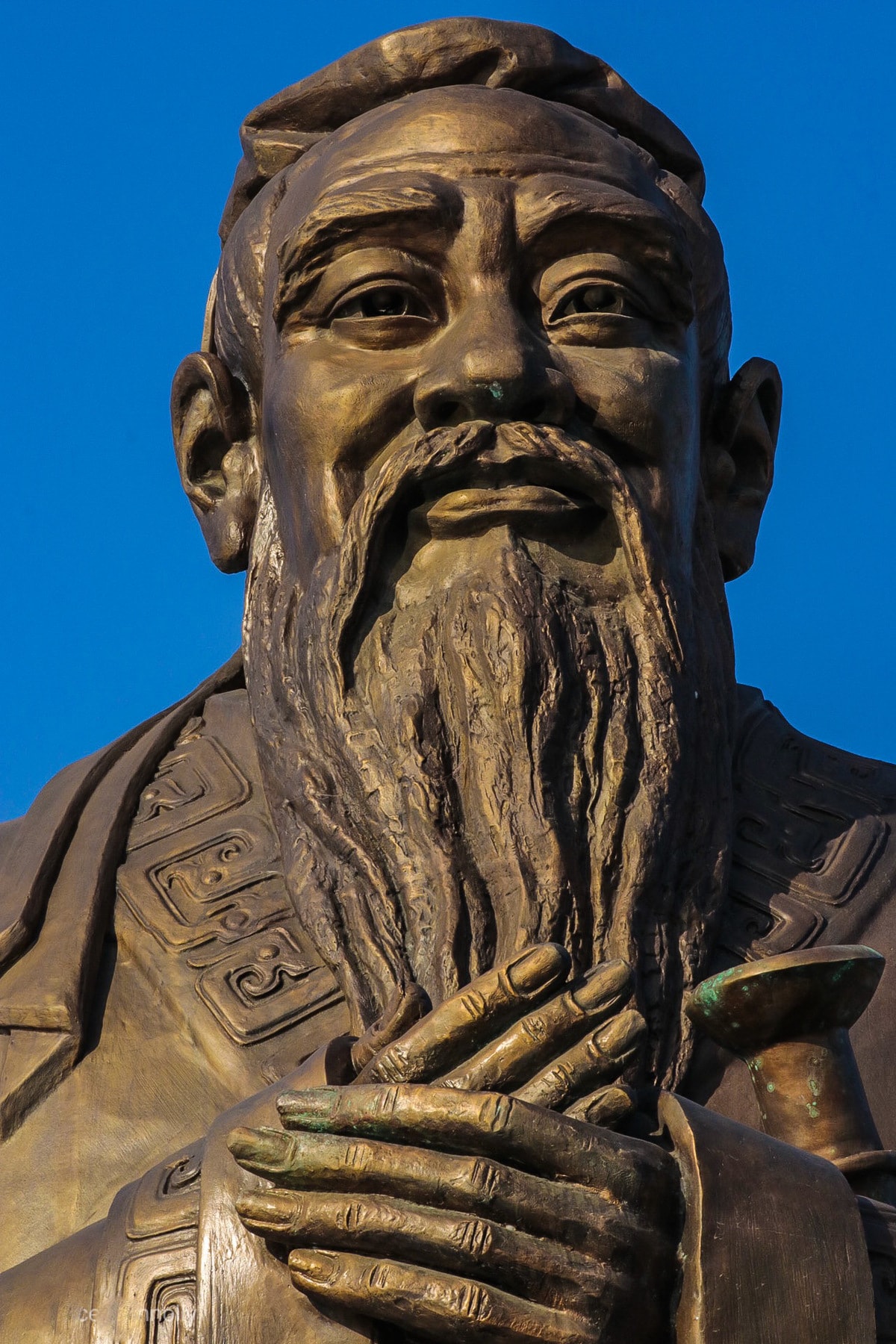
Summary
From ancient oracle bone script to modern mandarin Chinese, we explore the evolution and structure of Chinese writing. Learn effective strategies to master Chinese characters, including avoiding isolation memorization, mastering stroke order, and implementing a robust review system. Plus, discover the joy of idioms and classical texts to deepen your understanding of Chinese culture. Whether you’re a beginner or an advanced learner, these tips will help you unlock the beauty and complexity of Chinese characters.
FAQs
1.How many Chinese characters exist in total?
There are over 50,000 Chinese characters in existence, with the “Hanyu Da Zidian” (The Great Chinese Dictionary) listing 54,678 characters. But don’t worry, you don’t need to learn them all! In modern Chinese, around 5,000 to 7,000 characters cover most everyday usage.
2.Do I need to be able to handwrite Chinese characters?
In today’s digital age, handwriting Chinese characters isn’t a must. Typing is often faster and more practical. However, learning to write a few basic characters can deepen your understanding of their structure and make learning more fun.
3.How do I look up an unfamiliar Chinese character in a dictionary?
You can use chinese english dictionary, and finding a new Chinese character in a dictionary can be like a mini-adventure:Most dictionaries are organized by radicals (key components of characters). Identify the radical of the character and look it up in the radical index; If you know the pronunciation, use the pinyin (phonetic system) to find it; Some dictionaries let you search by the number of strokes in the character.
4.How many Chinese characters are needed for basic literacy?
For basic literacy, aim for around 2,000 to 2,500 common characters. With this foundation, you’ll be able to read most everyday texts. Expand to 3,500 characters, and you’ll cover 99.5% of modern mandarin Chinese texts. Happy learning!
5.What are the characteristics of Chinese characters?
One prominent feature of Chinese characters is their semantic nature.The shape of a character often reflects certain aspects of its meaning.For example,the character”明”(míng),which means”bright,”is composed of”日”(rì,sun)on the left and”月”(yuè,moon)on the right.Both the sun and the moon are sources of light,hence the character”明”conveys the idea of brightness.
Another feature is polysemy. Many Chinese characters have multiple meanings.Take the character”行”(xíng)as an example.It can mean”to walk”(as in”行走”-xíngzǒu,to walk),”can”or”okay”(as in”行,我明白了”-xíng,wǒ míngbáile,okay,I understand),”industry”(as in”银行”-yínháng,bank),and more.The specific meaning needs to be determined based on the context in which the character is used.
Mastering Chinese Ideograms easily
Specially tailored for kids aged 3-18 around the world!
Get started free!
Lea is a passionate educator and writer,hailing from Beijing Jiaotong University where she graduated with a degree in English.With a deep understanding of education and a knack for making learning engaging,she brings a unique blend of knowledge and creativity to her writing. Whether crafting educational content or sharing tips on making math fun, Lea’s goal is to inspire and empower both parents and children on their learning journey.





![20+ Chinese Curse Words Explained: Common Swear Words [with Pinyin & Meanings] 20+ Chinese Curse Words Explained: Common Swear Words [with Pinyin & Meanings]](https://wp-more.wukongedu.net/blog/wp-content/uploads/2025/03/image-353-520x293.png)





















Comments0
Comments